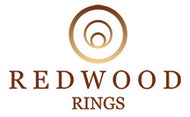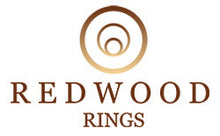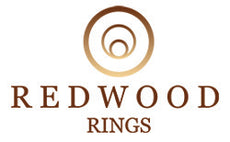What is the History of Wedding Rings?

The history of wedding rings is a fascinating journey that spans across cultures and millennia. These small, circular bands, often crafted from precious metals, have been a symbol of love, commitment, and marital status since ancient times. The tradition originated in ancient Egypt, where rings were made from materials like reeds and leather.
From the simple bands of ancient civilizations to the ornate and gem-studded rings of today, the wedding ring has evolved while maintaining its core symbolism.
Table of content
Ancient Beginnings
The fascinating history of wedding rings traces their origins back to ancient civilizations such as Egypt and Rome, where they were crafted from readily available materials like reeds, leather, and iron.

Early Use in Egypt and Rome
In ancient Egypt, wedding rings were commonly crafted from materials like reeds and leather, reflecting the resources available along the Nile. These early examples were simple in design, often forming a straightforward band.
Similarly, in ancient Rome, the adoption of the wedding ring was marked by a shift to more durable materials such as iron. The Romans also introduced the practice of wearing the ring on the third finger of the left hand, a tradition that has endured into modern times.
Both civilizations recognized the wedding ring as a public, tangible sign of a marriage agreement, with the durability of the materials used in Rome reflecting the desired permanence of the union.
Did you know?
The ancient Egyptians thought the left ring finger had a "vein of love" leading to the heart. The Romans adopted this belief by wearing a wedding ring on a ring finger. Despite its anatomical inaccuracy, this tradition persists today.
Spread to Other Ancient Civilizations
As the use of wedding rings expanded beyond Egypt and Rome, various ancient cultures began incorporating the tradition, each applying their unique approach to materials and design. In Greece, for example, rings became more intricate and were often part of the dowry exchange, symbolizing a man's commitment. Other civilizations saw variations in the materials and styles used, with some preferring more ornate designs to signify wealth and social status.
Despite these differences, the ring maintained its primary function across these cultures as a physical marker of the marriage contract, becoming an integral part of matrimonial customs worldwide.
Evolution Through the Ages
As societies evolved, so did the tradition of the wedding ring, reflecting changes in aesthetics, materials, and cultural influences over time. This journey through the ages reveals a fascinating evolution from the ancient symbols of eternity to more intricate and varied expressions of love and commitment.
Middle Ages and Renaissance Developments
During the Middle Ages and Renaissance, wedding rings underwent significant transformations in both design and material. The introduction of precious metals like gold and silver made rings more durable and visually appealing, while designs became increasingly elaborate, often featuring engravings and gemstones.
The influence of Christianity during this period was profound, intertwining religious beliefs with marital customs. Rings began to bear symbols of faith and were often incorporated into the wedding ceremony itself, taking on a sacred role in representing the vows and spiritual union of the couple.
Did you know?
Gimmel rings, characterized by their two interlocking components, gained popularity in the 16th and 17th centuries. After the wedding, each spouse would wear one part of this ring.

The Rise of Betrothal Rings and Poesy Rings
Parallel to the evolution of wedding rings was the rise of betrothal rings and poesy rings. Betrothal rings, precursors to modern engagement rings, were given as a promise of marriage, symbolizing a couple's commitment prior to the wedding.
Poesy rings, popular from the late Medieval period through the Renaissance, were often inscribed with romantic or religious phrases, epitomizing the personal and emotional connection between the couple. These rings were not only promises of future marriage but also tokens of affection and devotion, reflecting the deepening personal and emotional significance attributed to marital symbols.
Modern Era
The Industrial Revolution ushered in significant changes for wedding rings, primarily through mass production techniques that made them more accessible to a wider population. As these rings became more affordable, their use spread across different social classes, democratizing what was once a luxury for the wealthy.
Concurrently, societal norms and expectations around marriage and personal adornment shifted, leading to a greater variety and individualization of wedding ring designs. This era set the stage for a more inclusive approach to marriage symbols, reflecting a broader range of personal tastes and socioeconomic backgrounds.
Advances in technology in the 20th and 21st centuries have introduced new materials like titanium and platinum, as well as techniques for creating more intricate and customized designs. The influence of media and popular culture has also been profound, with trends often popularized by celebrities and fashion movements leading to a continuous evolution of styles.

Cultural Variations
The tradition of wedding rings varies widely across cultures, each imbuing this symbolic piece with its customs, meanings, and practices. These variations reflect human societies' rich diversity and unique perspectives on love, commitment, and marriage. Exploring these differences offers insight into the myriad ways that cultures worldwide celebrate and symbolize the union of two individuals.
Differences in Wedding Ring Traditions Around the World
In modern times, wedding traditions have evolved further. In England and North America, wedding rings mark special milestones throughout a marriage. In Eastern Europe, including Poland, Russia, and parts of Austria and Germany, brides and grooms wear their engagement and wedding rings on their right hand. This practice is also seen in Nordic countries like Sweden.
In Chile, both women and men receive engagement rings, which are worn on their right hands. After marriage, they move them to their left hands. In contrast, in Congo, couples are not allowed to smile on their wedding day.
These diverse traditions underscore the universal significance of wedding rings as symbols of love and commitment while also highlighting the unique cultural nuances that make each tradition special.
Contemporary Adaptations and Non-Traditional Approaches
Recently, there has been a notable shift towards contemporary adaptations and non-traditional approaches to wedding rings. Couples increasingly opt for alternatives that reflect their values, identities, and tastes.
This includes using unconventional materials, such as wood or silicone and designs that break from the classic band shape. Some choose to forgo rings entirely, seeking other forms of symbolic commitment like tattoos or shared experiences. These contemporary practices highlight the evolving nature of marriage symbols, emphasizing personalization and breaking traditional molds to better reflect modern couples' unique bonds and beliefs.
Conclusion
The history of wedding rings is a testament to the enduring human desire to symbolize love, commitment, and unity. From their simple beginnings in ancient Egypt and Rome to their intricate and personalized forms in the modern era, wedding rings have continuously evolved, reflecting the changing times and values of societies around the world. Whether through the adoption of new materials and designs or the integration of cultural and religious significance, these rings have maintained their role as a tangible expression of one of life's most profound bonds.
The modern shifts towards inclusivity and personalization in-ring styles and meanings are further evidence of the dynamic nature of this enduring symbol. As we look back on the journey of the wedding ring, it's clear that while styles, materials, and customs may change, the symbol of the wedding ring remains a universal and powerful expression of the enduring nature of love and partnership.





